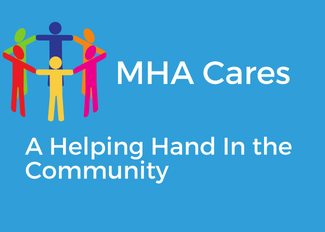Many of us have been profoundly unsettled by the deaths to suicide of two celebrity figures, Kate Spade and Anthony Bourdain. Although most of us did not know them personally, we feel a connection. Possibly we recognized or even owned an iconic Kate Spade bag; or maybe we immersed ourselves in the travel and culinary world of Anthony Bourdain. These two deaths shock us and propel us to question our perceptions and assumptions. We are reminded that, sometimes unrecognized by others, people struggle deeply and persistently with emotional pain, feelings of loss, long-remaining impacts of trauma, and loss of meaning in life. For some, continuing to struggle with the impact of anxiety, depression, or other mental health challenges becomes unbearable and unimaginable. For others, especially youth, acute experiences of rejection seem too much to get through.
The deaths of high-profile individuals and the saturation media coverage also reverberate with losses close to home. Throughout our communities we lose people to suicide each year—youth, young adults and more senior members of our community. Their lives were lived in all areas of our county, their life-styles and backgrounds culturally, economically, racially, vocationally varied. What unites them is that their own actions ended their lives. Their lives are commemorated by grieving friends and family members who struggle to understand, and to find a new way forward in their own lives.
The problem of suicide has become an ever-present weight in our consciousness. At this time, we encourage all of us to attend to two primary concerns: For those of us who have been touched directly by loss to suicide, this may be a particularly difficult time. Memories, thoughts of your loved one, and difficult feelings may re-surface. This is an important time to take care of yourself—in whatever way works for you. Connecting with loved ones, disconnecting from media, assisting others, and taking care of your physical health (through exercise that you enjoy, good nutrition, adequate rest, and not relying on alcohol or other substances for relaxation) are effective ways to become and remain emotionally balanced. This may also be the time to connect or re-connect with formal and professional supports such as mental health services, clergy support and peer support.
This is also the time to reach out to the people in our lives about whom we may be concerned—despite the challenge. There are so many reasons why we do not initiate uncomfortable conversations. Perhaps we don’t know how to start; we don’t know how someone may respond; we are wary of being “nosy” or intrusive; we are frightened of creating or exacerbating a fraught situation. Perhaps most frightening, we worry that if someone acknowledges that they are struggling or having thoughts of suicide, we won’t know what to do and would become responsible for their life and safety. These are understandable worries. However, what we know is that when conversations are started with genuine concern for another’s well-being, that person tends to be relieved that someone has noticed and cared enough to ask. You do not create risk of suicide by asking the question. If someone acknowledges that they are struggling or thinking about suicide, there are resources that are immediately available, as well as available for the longer term.
For immediate assistance, the National Suicide Prevention Lifeline is available 24/7 at 1-800-273-TALK. The Lifeline also provides online chat options and dedicated assistance for veterans and members of the military and their families. There is also a Crisis Text Line which can be reached by texting HOME to 741741. Longer-term assistance is available through MHA's many programs and services or by phone (914) 345-5900.
Suicide has become a public health problem. It is also a problem that is local and personal. We can each make a significant contribution toward helping our communities work toward “suicide-safety.”
Barbara Bernstein, PhD, MPH
Chief Planning Officer
Mental Health Association of Westchester
Dr. Bernstein also serves as co-chair of the Westchester County Suicide Prevention Task Force with Commissioner of the Department of Community Mental Health Michael Orth. This piece was originally published in The Journal News.

